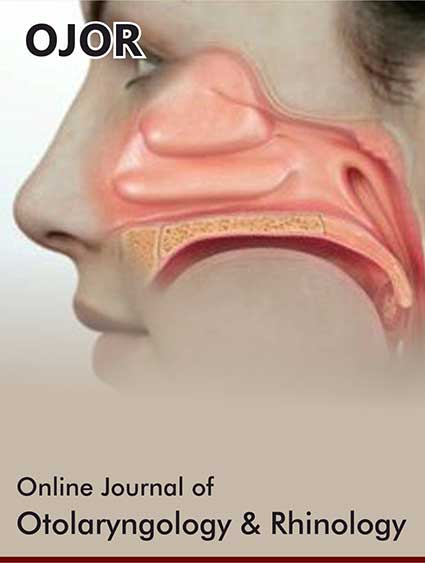 Research Article
Research Article
Pressure-Less Acoustic Immittance Measurements of Patients with Persistent Ventilation Disorders
Moayad Anbari1, Shirin Zhumabaeva2, Munar Beishenova2, Dörte Fischer1,3, Shayirbek Sulaimanov2 and Tino Just1*
1Department of Otorhinolaryngology, Head and Neck Surgery, KMG Klinikum, Güstrow, Germany
2Department of Otorhinolaryngology, The National Center of Maternity and Childhood Care, Bishkek, Kyrgyzstan
3Department of Audiology, KMG Klinikum, Güstrow, Germany
Moayad Anbari (OCRID-ID: 0009-0003-5565-6437)
Dr. Shirin Zhumabaeva (OCRID-ID: 0000-0002-9073-1127)
Dr. Munar Beishenova (OCRID-ID: 0009-0000-8375-2563)
Dr. Dörte Fischer (OCRID-ID: 0000-0003-3736-4441)
Professor Shayirbek Sulaimanov (OCRID-ID: 0000-0002-0980-0501)
Professor Tino Just (OCRID-ID: 0000-0003-2036-8569)
Tino Just, M.D, Department of Otorhinolaryngology, Head and Neck Surgery Friedrich-Trendelenburg-Allee 1, D-18273 Güstrow, Germany
Received Date: January 02, 2025; Published Date: January 15, 2025
Abstract
This study presents pressure-less acoustic immittance (PLAI) measurements in patients with chronic ventilation disorders. An acoustic signal (100 - 3000 Hz) is introduced into the outer ear canal, allowing for determining the resonance frequency (RF) and the admittance peak.
This study aims to re-evaluate test results in patients with chronic tube ventilation disorders using PLAI in conjunction with tympanometry, pure tone audiometry, and otoscopy.
Material and Methods: PLAI measurements were conducted using a CE-certified system, MedWave® (Neuranix, Italy). In this prospective study, 135 subjects from two Departments of Otorhinolaryngology were included, with a mean age of 53.3 ± 17.6 years (79 men and 56 women). This group consisted of 99 patients (45 unilateral and 54 bilateral) with middle ear disorders and 36 healthy subjects with normal bilateral ears.
All participants, including patients with chronic ventilation disorders and 36 healthy subjects, underwent a comprehensive medical evaluation, which included ear, nose, and throat examinations, video otoscopy, pure tone audiometry, PLAI measurement using MedWave®, conventional single- frequency tympanometry, and video endoscopy with Valsalva maneuver (a forceful attempt of exhalation against a closed airway) for patients with tube ventilation issues.
Results: Among the 37 ears with tube ventilation disorders (mesotympanic and/or epitympanic retraction, adhesive process, hyperectasis) without middle ear effusion, an average resonance frequency of 440 Hz ± 180.1 Hz (ranging from 161.5 to 1109 Hz) and an average peak of 2.00*10-2 mmho ranging from .62 to 4.41*10-2 mmho was determined. It was shown that a slight retraction of the tympanic membrane could lead to the PLAI diagnosis of “normal” or “soft,” while cases with fixation of the ossicular chain, confirmed by middle ear surgery, were diagnosed as “rigid.”
Conclusion: This study demonstrates the implementation of PLAI and the interpretation of the PLAI measures in conjunction with otoscopy, audiometry, and single-frequency tympanometry in patients with chronic tube ventilation disorders. The incorporation of PLAI into the diagnostic battery appears to predict early-stage fixation of the ossicular chain, particularly in strong epitympanic retraction pockets.
-
Moayad Anbari, Shirin Zhumabaeva, Munar Beishenova, Dörte Fischer, Shayirbek Sulaimanov and Tino Just*. Pressure- Less Acoustic Immittance Measurements of Patients with Persistent Ventilation Disorders. On J Otolaryngol & Rhinol. 7(3): 2025. OJOR.MS.ID.000663.





